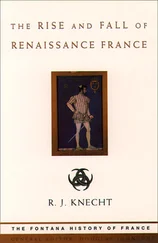Although the Nymegen peace treaties of 1678–9 brought the open fighting to an end, Louis XIV’s evident desire to round off France’s northern borders, his claim to be ‘the arbiter of Europe’, and the alarming fact that he was maintaining an army of 200,000 troops in peacetime disquieted Germans, Dutchmen, Spaniards, and Englishmen alike. 47 This did not mean an immediate return to war. The Dutch merchants preferred to trade in peace; the German princes, like Charles II of England, were tied to Paris by subsidies; and the Habsburg Empire was engaged in a desperate struggle with the Turks. When Spain endeavoured to protect its Luxembourg territories from France in 1683, therefore, it had to fight alone and suffer inevitable defeat.
From 1685, however, things began to swing against France. The persecution of the Huguenots shocked Protestant Europe. Within another two years, the Turks had been soundly defeated and driven away from Vienna; and the Emperor Leopold, with enhanced prestige and military strength, could at last turn some of his attention to the west. By September 1688, a now-nervous French king decided to invade Germany, finally turning this European ‘cold’ war into a hot one. Not only did France’s action provoke its continental rivals into declaring hostilities, it also gave William of Orange the opportunity to slip across the Channel and replace the discredited James II on the English throne.
By the end of 1689, therefore, France stood alone against the United Provinces, England, the Habsburg Empire, Spain, Savoy, and the major German states. 48 This was not as alarming a combination as it seemed, and the ‘hard core’ of the Grand Alliance really consisted of the Anglo-Dutch forces and the German states. Although a disparate grouping in certain respects, they possessed sufficient determination, financial resources, armies, and fleets to balance the Sun King’s France. Ten years earlier, Louis might possibly have prevailed, but French finances and trade were now much less satisfactory after Colbert’s death, and neither the army nor the navy – although numerically daunting – was equipped for sustained and distant fighting. A swift defeat of one of the major allies could break the deadlock, but where should that thrust be directed, and had Louis the will to order bold measures? For three years he dithered; and when in 1692 he finally assembled an invasion force of 24,000 troops to dispatch across the Channel, the ‘maritime powers’ were simply too strong, smashing up the French warships and barges at Barfleur-La Hogue. 49
From 1692 onward, the conflict at sea became a slow, grinding, mutually ruinous war against trade. Adopting a commerce-raiding strategy, the French government encouraged its privateers to prey upon Anglo-Dutch shipping while it reduced its own allocations to the battle fleet. The allied navies, for their part, endeavoured to increase the pressures on the French economy by instituting a commercial blockade, thus abandoning the Dutch habit of trading with the enemy. Neither measure brought the opponent to his knees; each increased the economic burdens of the war, making it unpopular with merchants as well as peasants, who were already suffering from a succession of poor harvests. The land campaigns were also expensive, slow struggles against fortresses and across waterways: Vauban’s fortifications made France virtually impregnable, but the same sort of obstacles prevented an easy French advance into Holland or the Palatinate. With each side maintaining over 250,000 men in the field, the costs were horrendous, even to these rich countries. 50 While there were also extra-European campaigns (West Indies, Newfoundland, Acadia, Pondicherry), none was of sufficient importance to swing the basic continental or maritime balance. Thus by 1696, with Tory squires and Amsterdam burghers complaining about excessive taxes, and with France afflicted by famine, both William and Louis had cause enough to compromise.
In consequence, the Treaty of Ryswick (1697), while allowing Louis some of his earlier border gains, saw a general return to the prewar status quo. Nonetheless, the results of the Nine Years War of 1689–97 were not as insignificant as contemporary critics alleged. French ambitions had certainly been blunted on land, and its naval power eroded at sea. The Glorious Revolution of 1688 had been upheld, and England had secured its Irish flank, strengthened its financial institutions, and rebuilt its army and navy. And an Anglo-Dutch-German tradition of keeping France out of Flanders and the Rhineland was established. Albeit at great cost, the political plurality of Europe had been reasserted.
Given the war-weary mood in most capitals, a renewal of the conflict scarcely seemed possible. However, when Louis’s grandson was offered the succession to the Spanish throne in 1700, the Sun King saw in this an ideal opportunity to enhance France’s power. Instead of compromising with his potential rivals, he swiftly occupied the southern Netherlands on his grandson’s behalf, and also secured exclusive commercial concessions for French traders in Spain’s large empire in the western hemisphere. By these and various other provocations, he alarmed the British and Dutch sufficiently to cause them to join Austria in 1701 in another coalition struggle to check Louis’s ambitions: the War of the Spanish Succession.
Once again, the general balance of forces and taxable resources suggested that each alliance could seriously hurt, but not overwhelm, the other. 51 In some respects, Louis was in a stronger position than in the 1689–97 war. The Spaniards readily took to his grandson, now their Philip V, and the ‘Bourbon powers’ could work together in many theatres; French finances certainly benefited from the import of Spanish silver. Moreover, France had been geared up militarily – to the level, at one period, of supporting nearly half a million troops. However, the Austrians, less troubled on their Balkan flank, were playing a greater role in this war than they had in the previous one. Most important of all, a determined British government was to commit its considerable national resources, in the form of hefty subsidies to German allies, an overpowering fleet, and, unusually, a large-scale continental army under the brilliant Marlborough. The latter, with between 40,000 and 70,000 British and mercenary troops, could join an excellent Dutch army of over 100,000 men and a Habsburg army of a similar size to frustrate Louis’s attempt to impose his wishes upon Europe.
This did not mean, however, that the Grand Alliance could impose its wishes upon France, or, for that matter, upon Spain. Outside those two kingdoms, it is true, events turned steadily in favour of the allies. Marlborough’s decisive victory at Blenheim (1704) severely hurt the Franco-Bavarian armies and freed Austria from a French invasion threat. The later battle of Ramillies (1706) gave the Anglo-Dutch forces most of the southern Netherlands, and that at Oudenarde (1708) brutally stopped the French effort to regain ground there. 52
At sea, with no enemy main fleet to deal with after the inconclusive battle of Málaga (1704), the Royal Navy and its declining Dutch equivalent could demonstrate the flexibility of superior naval power. The new ally, Portugal, could be sustained from the sea, while Lisbon in turn provided a forward fleet base and Brazil a source of gold. Troops could be dispatched to the western hemisphere to attack French possessions in the West Indies and North America, and raiding squadrons could hunt for Spanish bullion fleets. The seizure of Gibraltar not only gave the Royal Navy a base controlling the exit from that sea, but divided the Franco-Spanish bases – and fleets. British fleets ensured the capture of Minorca and Sardinia; they covered Savoy and the Italian coasts from French attack; and when the allies went on to the offensive, they shepherded and supplied the imperial armies’ invasion of Spain and supported the assault upon Toulon. 53
Читать дальше












